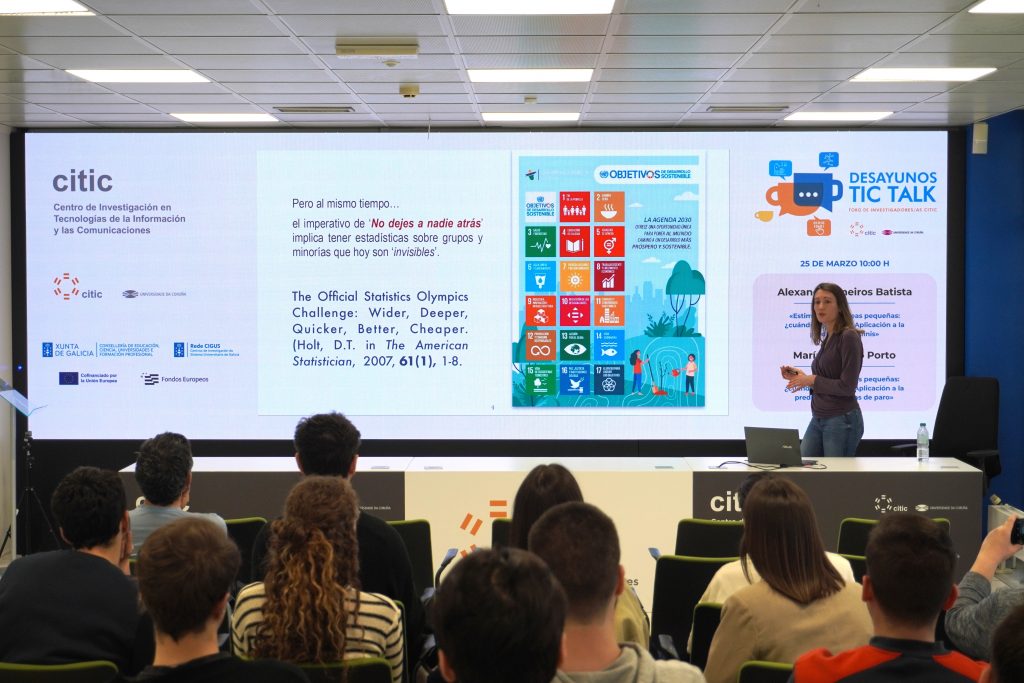
New methods to improve socioeconomic data estimation in small areas at the march TIC Talk
The Research Center for Information and Communication Technologies (CITIC) at the University of A Coruña hosted two presentations today focused on improving the estimation of socioeconomic data in small areas. These studies address key issues such as predicting the number of young people who are neither studying nor working (commonly known as «NEETs») and estimating unemployment rates at the municipal level.
Researcher Alexandro Aneiros Batista presented his study titled «Small Area Estimation: When and Why? Application to NEET Prediction», in which he proposed an innovative method to more accurately estimate the number of NEETs in each province of Spain. His approach combines surveys and various data sources to enhance data quality and ensure consistency with official regional figures. The Labour Force Survey has been the primary reference used in this study.
Meanwhile, María Bugallo Porto delivered the presentation «Small Area Estimation: When and Why? Application to Unemployment Rate Prediction», where she explained how small area estimation can improve data accuracy in populations with limited samples. Her work focuses on predicting municipal-level unemployment rates using a mixed multinomial model, which leverages data at the sample unit level and from different sources.
Both studies highlight the importance of small area estimation as a key tool for decision-making in public policy and socioeconomic planning. By applying advanced statistical models and integrating multiple data sources, more precise predictions can be achieved, leading to better resource allocation and the implementation of more effective labor and social strategies.
The TIC Talk Breakfasts provide a meeting space where early-career researchers share the latest developments in their respective fields, emphasizing the value of interdisciplinary collaboration and the impact of information and communication technologies.





